|
Fall is a special time of the year to be on the Driftless Region trout streams because air and stream temperatures are cooling down making the trout more aggressive. Although most people don’t think of fishing our small streams with streamers, it’s a very effective way to cover lots of water quickly and find/catch fish in the process. September-October 15 is a great time of the year to fish streamers because trout are actively feeding to pack on calories for winter and becoming more territorial for the upcoming spawning season. This is active fast paced fishing where we cover lots of water and get visual aggressive strikes. Even the fish that miss our flies are an eventful memory. Madison Fly Fishing Company is doing guide trips that are 100% dedicated to streamer fishing now thru October 15. I’ll cover effective flies, leader systems, fishing techniques, and where to look for fish on these trips. If you’ve wanted to learn how to fish streamers on our spring creeks, but don’t know where to start, book a guide trip between now and October 15 to get in on the excitement. Book Now. We’re now set up to take secure credit card payment. Mornings start with good nymph and streamer fishing, and good trico spinner falls where that insect is present. This time of season really shines with the return to "banker's hours" fishing with trout eating terrestial insects (grasshoppers, crickets, ants and bettles) from 10:30 a.m. to 5:30 p.m. A grassy meadow section of stream on a warm, sunny and breezy day has these insects blowing into the stream - and the trout go crazy for them! Presentation doesn't have to be delicate - get wild because splatting your fly is going to get those hungry trouts' attention, letting them know food is nearby. It's a good idea to fish a hopper with a beadhead nymph below it to cover both your surface and subsurface bases.
Evenings and overcast afternoons can bring out late season bluewing olive mayfly and evening caddis hatches in addition to action-packed streamer fishing. Mayflies are smaller that in the spring so fishing can be challenging, but rewarding. Streaming fishing is a great way to cover lots of stream miles quickly and efficiently because you can fish every little and big spot in the stretch. 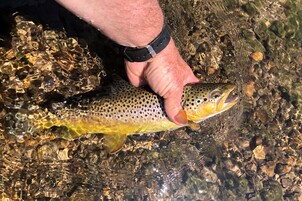 I previously wrote a piece on tactics to make your mid-summer trout fishing more productive. In this piece, I’m going to tell you how to deal with the hot mid-summer temperatures to make it easier on both you and the trout. In the Driftless region of the upper Midwest, we always have a two week period(sometimes longer sometimes shorter) when daytime highs are in the 90’s and oppressively humid. Because this coincides with the longest, sunniest days of the year, these temperatures can take our spring creeks from the mid 50’s to the mid 60’s or even low 70’s. Stream temperatures of 65 degrees can be very stressful to trout and cause some mortality, 70 degrees is lethal to trout. Best advice during these heat waves is to fish for smallmouth bass which have a higher tolerance for warm water and are more active in these temperatures, but many folks are “addicted to trout”. Here's some advice on how to fish smarter during the heat of the summer. First, fish early morning to mid/late morning because the stream has been able to cool down overnight so it will be at the coolest temperature of the day and the fish are most active. If you start fishing at 6 AM, you’re fishing at least 4 hours, and have the rest of the day to do other things. Fish the upper stretches of a stream because this is generally faster pocket water that is cooler and more oxygenated. Save the lower stretches of stream for winter, spring, and fall. Carry a stream thermometer with you and use it religiously-you want to fish where the water temperature is coolest. It only takes 2 degrees to make a difference for example 58 degrees puts you in a better place than 60 degrees. Concentrate your fishing on areas where the water will be cooler such the shaded area by limestone bluff, pockets below riffles, and places where springs flow into the stream. Try not to fish too long by springs because fish stack up there and this can put added stress on the fish. Finally try to keep fish handling to a minimum because the longer the fish is out of the water the more stressed it is, and the less likely it’ll survive. If you must take pictures of the trout, use a net to keep the fish in the water and don’t take more photos than necessary. People experience discomfort in warm weather too, and here’s some tips to make you more comfortable in the heat of summer. Don’t wear waders-they’re too hot, wet wade instead with quick dry hiking pants and your wading boots. Wear a hooded sun shirt like the Buggstopper Solarflex Hoody from Simms-the hood keeps the sun off your neck and ears, it’s lightweight and comfortable, and the insect shield keeps the biting insects away. Use sunscreen to prevent sunburn-SunBum SPF 30-50 is a good one because it’s sweat/water proof and lasts a long time. Finally STAY HYDRATED-carry a water bottle with you or a Camelback backpack with a water bladder to stay in good physical and fishing shape. I hope this advice helps you get the most out of your summer trout fishing. It’s not about fishing all day from dawn to dusk but about fishing smarter, not harder. Good luck and stay safe out there. 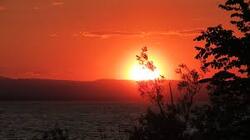 A little late (sorry readers!)... As the summer solstice passes and we slide into the heat of mid-summer some anglers leave the trout streams thinking the fishing has slowed because major hatches are ending. This couldn’t be further from the truth-trout still feed and the streams aren’t as crowded. Now is when trout start to key in on terrestrial insects-land born bugs that are blown into the stream. Terrestrial fishing isn’t just about grasshoppers either-ants, beetles, crickets are also part of the mix. Ants and beetles are important because they’re more abundant, happen earlier in the year than people think, and they get fewer refusals because they’re smaller and fish can’t examine them as closely. Two key factors you need to pay attention to are shade and water temperature. Shade comes in a variety of forms-grass lined undercut banks, undercuts in weed patches, bank side and submerged trees, limestone bluffs, and riffles. A stream thermometer is your best friend for mid-summer trout fishing because you want to find the coolest water in the stream. Trout will be holding in shaded shallow water that’s near the bank so they can eat an insect the second it lands in the water. Try to fish your fly along bank side grass, lunker structures, pockets at the base of riffles, and fallen submerged wood. Make sure your fly lands on the water with a splat-this simulates an insect being blown into the water and landing hard-be ready for a strike immediately. If you can’t give up your nymph fishing, the dry/dropper method is a great cover all bases searching technique. Simply take a foam terrestrial pattern and tie 18-30” of 5X tippet to the hook bend and tie a size 18 bead head nymph onto the tippet. This rig lets you fish the slightly deeper pockets along the bank and below the riffles and puts a subsurface fly in front of a fish that won’t come up to eat. The terrestrial serves as an “edible strike indicator” and when a fish eats it you hook him-win/win. If you want to learn more about mid-summer terrestrial fishing, book a guide trip with Madison Fly Fishing Company here. |
Categories |

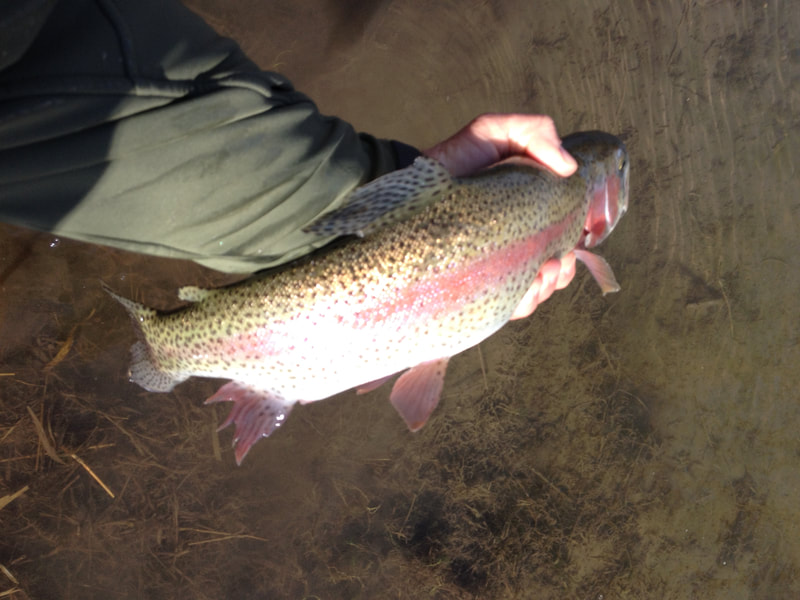
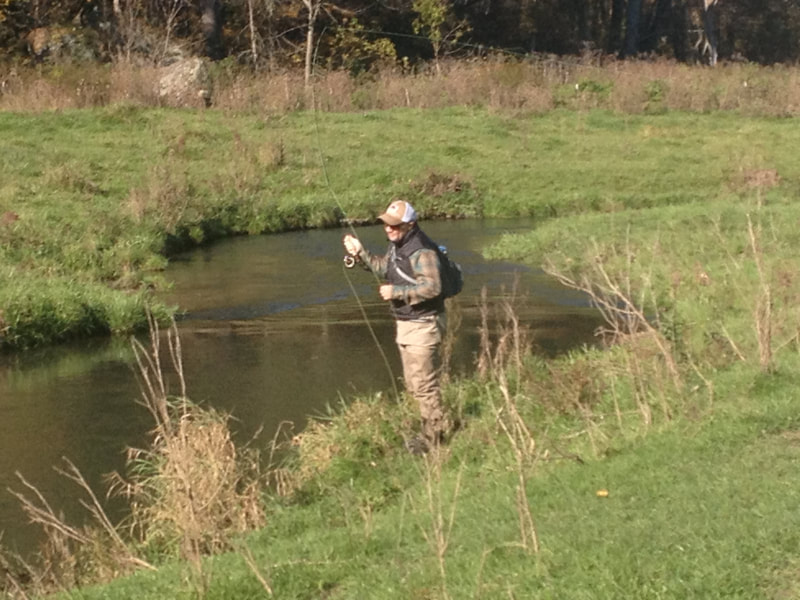
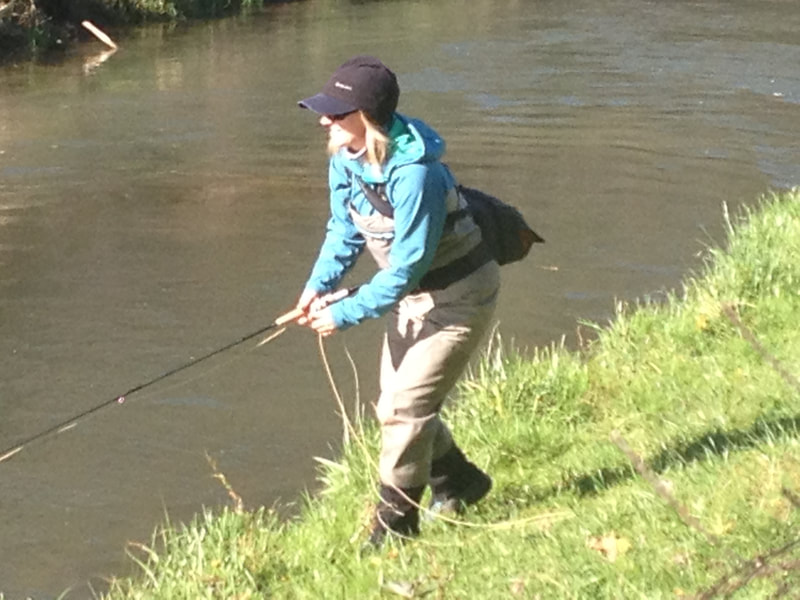
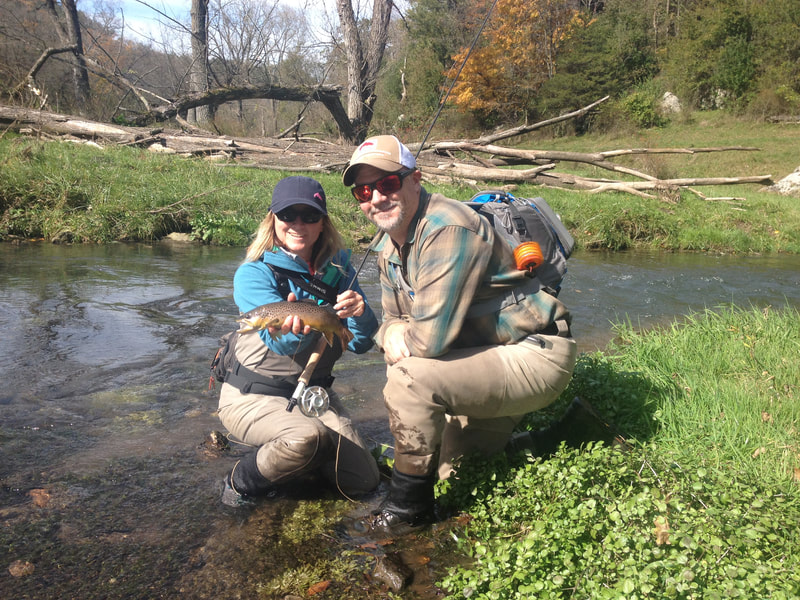
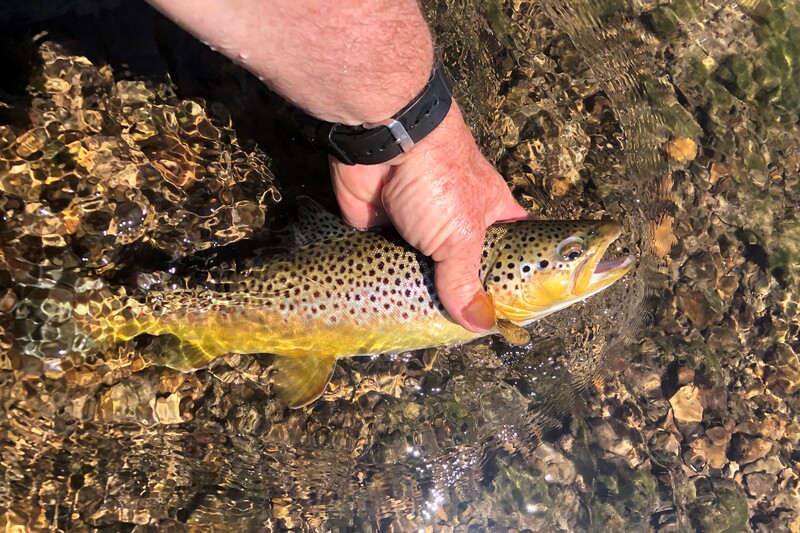
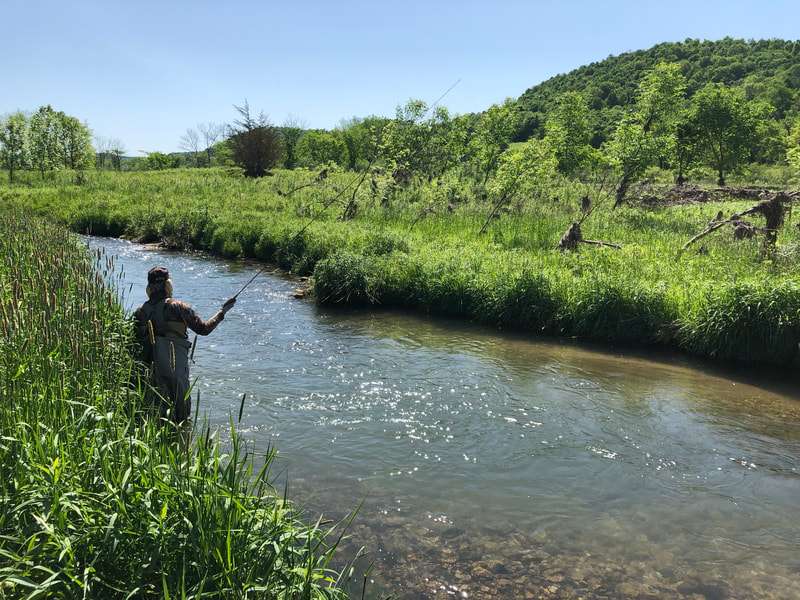
 RSS Feed
RSS Feed
